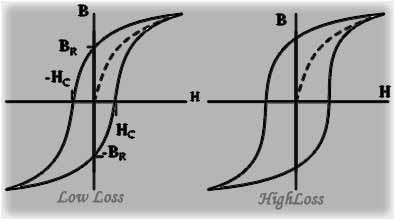ABB Electrical Design Software: Best Guide
When it comes to electrical design, choosing the right tools is critical for achieving precision, efficiency, and compliance with industry standards. ABB electrical design software stands out as a leading solution for engineers and designers. Known for its advanced features, seamless integration, and focus on streamlining complex electrical design processes, ABB electrical design software is a game-changer for industries ranging from power generation to industrial automation.
In this article, we’ll explore the capabilities of ABB electrical design software, its key features, benefits, and use cases, along with why it’s a must-have for modern electrical engineering projects.

Table of Contents
Key Features of ABB Electrical Design Software
ABB electrical design software is designed to provide a robust platform for electrical engineers to create, analyze, and optimize designs with ease. Below are the software’s primary features:
1. Comprehensive Design Capabilities
ABB’s software supports the creation of detailed one-line diagrams, multi-line schematics, and control circuit designs. This functionality ensures that engineers can design electrical systems for a wide variety of applications, including power distribution networks and industrial control systems.
2. Standards Compliance
The software complies with international standards such as IEC and IEEE, ensuring your designs meet global regulatory requirements. This feature is especially useful for multinational projects.
3. Simulation and Analysis Tools
ABB electrical design software includes powerful simulation tools to analyze circuit behavior under different conditions. This feature allows engineers to detect issues such as overloading, short circuits, or voltage drops early in the design phase.
4. Integration with ABB Products
The software seamlessly integrates with ABB’s extensive range of products, such as circuit breakers, switchgear, and relays. Engineers can select components directly from ABB’s product library, saving time and ensuring compatibility.
5. User-Friendly Interface
ABB electrical design software comes with an intuitive interface that simplifies the design process. Drag-and-drop functionality, customizable toolbars, and shortcut keys enhance productivity.
6. 3D Modeling and Visualization
The ability to create 3D models of electrical panels and layouts is a major advantage. This feature allows engineers to visualize their designs, ensuring proper spacing and layout optimization.
7. Automatic BOM Generation
The software automatically generates a bill of materials (BOM) based on the design. This reduces manual errors and ensures accurate cost estimation.
8. Cloud-Based Collaboration
With cloud capabilities, teams can collaborate on designs in real time, making it easier to manage large projects and ensure everyone stays on the same page.
Note: Use our online electrical load calculator for electrical load calculation here. You can also use voltage drop calculator for voltage drop calculation for cable selection in any single and three phase circuit here. Further explore our online electrical calculators to design your electrical systems in an efficient way.
Benefits of Using ABB Electrical Design Software
Using ABB electrical design software offers several advantages that improve project efficiency, accuracy, and overall performance:
- Time Savings: Automated processes, such as BOM generation and error detection, significantly reduce design time.
- Improved Accuracy: Built-in compliance with standards and detailed simulations help minimize errors.
- Enhanced Collaboration: Cloud-based features enable multiple engineers to work on the same project simultaneously.
- Cost Efficiency: Optimized designs and accurate BOMs help control project costs.
- Integration with Hardware: Direct access to ABB’s product database ensures compatibility and simplifies procurement.
Applications of ABB Electrical Design Software
ABB electrical design software is versatile and can be applied to a wide range of projects. Some key applications include:
1. Power Distribution Systems
The software is widely used for designing power distribution systems in industrial, commercial, and residential settings. Its simulation tools ensure optimal load distribution and fault detection.
2. Industrial Automation
In industrial automation, ABB electrical design software aids in creating control circuits for machinery, ensuring precise operation and minimal downtime.
3. Renewable Energy Projects
The software is ideal for designing systems for renewable energy projects, such as solar and wind farms. Its compliance with global standards ensures these systems are efficient and reliable.
4. Data Centers
For data centers, the software enables the design of robust and reliable electrical systems that can handle high loads and ensure uninterrupted operation.
5. Oil and Gas Industry
ABB electrical design software is also used in designing electrical systems for offshore platforms and refineries, where safety and reliability are paramount.
How ABB Electrical Design Software Stands Out
Compared to other electrical design tools, ABB’s solution offers several unique advantages:
- Integration with ABB Ecosystem: The seamless connection to ABB’s hardware ecosystem is unparalleled.
- Advanced Simulation: Few tools offer the level of simulation accuracy provided by ABB’s software.
- Global Standards Compliance: Automatic compliance checks save time and ensure regulatory adherence.
- Customizable Features: The software allows users to customize templates, toolbars, and workflows, adapting to specific project needs.
Steps to Get Started with ABB Electrical Design Software
If you’re new to ABB electrical design software, follow these steps to begin:
- Download and Install: Visit ABB’s official website to download the software. Follow the installation instructions provided.
- Explore Tutorials: ABB offers comprehensive tutorials and user manuals to help you familiarize yourself with the software.
- Set Up a Project: Start by creating a new project and setting the parameters based on your requirements.
- Use Product Libraries: Browse ABB’s extensive product library to select the components needed for your design.
- Run Simulations: Once your design is complete, use the simulation tools to test its performance.
- Generate Reports: Use the reporting tools to generate BOMs and other necessary documentation.
Frequently Asked Questions (FAQs)
1. Is ABB electrical design software suitable for beginners?
Yes, the software is user-friendly and comes with tutorials and guides that make it easy for beginners to get started.
2. Can I integrate third-party components with the software?
While the software is optimized for ABB products, it also supports the integration of third-party components.
3. Is the software cloud-based?
Yes, ABB electrical design software includes cloud-based features for real-time collaboration and data storage.
4. What industries benefit most from this software?
Industries such as power generation, renewable energy, industrial automation, and oil and gas benefit significantly from ABB electrical design software.
5. Does the software offer technical support?
ABB provides excellent technical support, including online resources, live chat, and customer service.
Conclusion
ABB electrical design software is an essential tool for engineers looking to create precise, efficient, and compliant electrical designs. With its advanced features, seamless integration with ABB products, and support for a wide range of applications, this software streamlines the design process while ensuring top-notch results. Whether you’re working on power distribution, industrial automation, or renewable energy projects, ABB electrical design software has the tools you need to succeed.
If you’re ready to elevate your electrical design projects, consider ABB electrical design software as your go-to solution. Its unparalleled capabilities and benefits make it a must-have for modern engineers and designers.
Subscribe our Newsletter to get the latest updates in Electrical Engineering.
Worth Read Posts
#ElectricalDesign, #ABBSoftware, #ElectricalEngineering, #DesignAutomation, #CADForElectrical, #EngineeringSoftware, #ElectricalTools, #SmartDesignSolutions, #ElectricalSystems, #SoftwareForEngineers, #DigitalDesign, #ElectricalProjects, #ABBDesignTools, #PowerSystemDesign, #EngineeringInnovation





